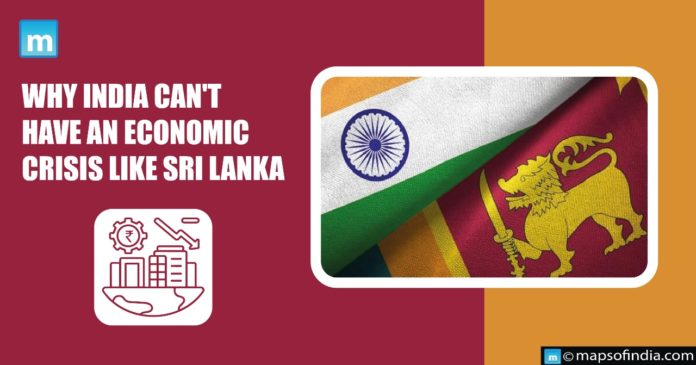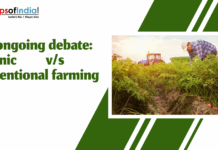The Sri Lankan economy has been experiencing a severe imbalance in its Balance of Payments (BoP). Its forex reserves are fast declining, making it incredibly difficult for the government to import essential consumer items.
In Sri Lanka, the current economic crisis has been caused by historical imbalances faced by the country’s economy, conditions imposed by the International Monetary Fund (IMF), and authoritarian actions of the administration.
Let us find out the reasons behind the crisis in Sri Lanka:
- After 26 years of civil war, Sri Lanka recovered in 2009, with its postwar economy growing by an average of 8-9% per year until 2012.
- Despite this, its average GDP growth rate declined significantly following 2013 due to a decline in global commodity prices, a decline in exports, and a significant increase in imports.
- Sri Lanka’s budget deficits were substantial throughout the conflict, and the 2008 global financial crisis depleted its currency reserves. As a result, the nation had to borrow $2.6 billion from the International Monetary Fund in 2009.
- Despite seeking an IMF loan of US $1.5 billion in 2016, Sri Lanka’s economic condition deteriorated due to the IMF’s conditions.
Financial Shocks faced in recent times
- The Easter bomb attacks in churches in Colombo in 2019, which resulted in several deaths, significantly reduced the number of visitors, causing a loss in forex reserves.
- During their campaign, the newly formed government led by Gotabaya Rajapaksa promised lower tax rates for farmers and a broader package of social programs for them.
- The hasty execution of these ill-advised policies intensifies the situation.
- In addition, the COVID-19 crisis in 2020 exacerbated the situation, causing tea, rubber, spices, and textile exports to suffer.
- International tourist arrivals fall significantly, eventually leading to a decline in revenues.
- Due to the COVID-19 pandemic, government spending increased in 2020-21 to overcome the shock, but the worsened budget deficit reached 10%, and the debt to GDP ratio reached 119%.
Fertilizer Ban law
- A ban on fertilizer imports was enacted in 2021, and Sri Lanka is set to become an agricultural nation based entirely on organic and natural processes.
- The abrupt switch to organic fertilizers has a significant influence on food output.
- To curb rising food prices, a weakening currency, and rapidly depleting foreign exchange reserves, the President of Sri Lanka declared an economic emergency.
How is the case of India different from Sri Lanka?
As previously noted, several reasons contribute to Sri Lanka’s economic crisis. However, the case of India differs from that of Sri Lanka.
Let’s examine them one by one:
Forex reserve
On September 3, foreign exchange reserves reached an all-time high of $642 billion. This amounted to 14–15 months of imports for 2021–22. Moreover, the present foreign exchange reserve is adequate for ten months. As a result, India ranks higher than other rising economies in foreign reserves. Thus, it is in a stronger position to manage its economy successfully.
Agriculture Production
India is an agrarian society with ample resources to lead agricultural output. Following the introduction of HYV seeds into the country, it has become a net exporter in the agricultural sector. India has become self-sufficient and a significant exporter of farm products to advanced countries such as the United States, UAE, and Japan. It puts India on a firmer footing than other countries experiencing food shortages and price fluctuations owing to a lack of essential food items.
Growth of the Indian economy
It has the world’s fifth-largest nominal GDP and third in the purchasing power parity (PPP). The conclusion of the Cold War era and a severe balance of payments crisis faced by the Indian economy in 1991 prompted India to implement widespread economic liberalization. Annual GDP growth has ranged between 6 to 7% since the beginning of the twenty-first century, and from 2013 to 2018, India was the world’s quickest emerging major economy, overtaking China. However, several issues plague the Indian economy, including a shortage of trained labour, education, and corruption.
Finally, we uncovered this after examining India’s present economic scenario. It is well-managed, rapidly growing, and one of the world’s leading economies. It is unlikely that it would end up in the same circumstances as Sri Lanka or any other country confronting an economic collapse.





